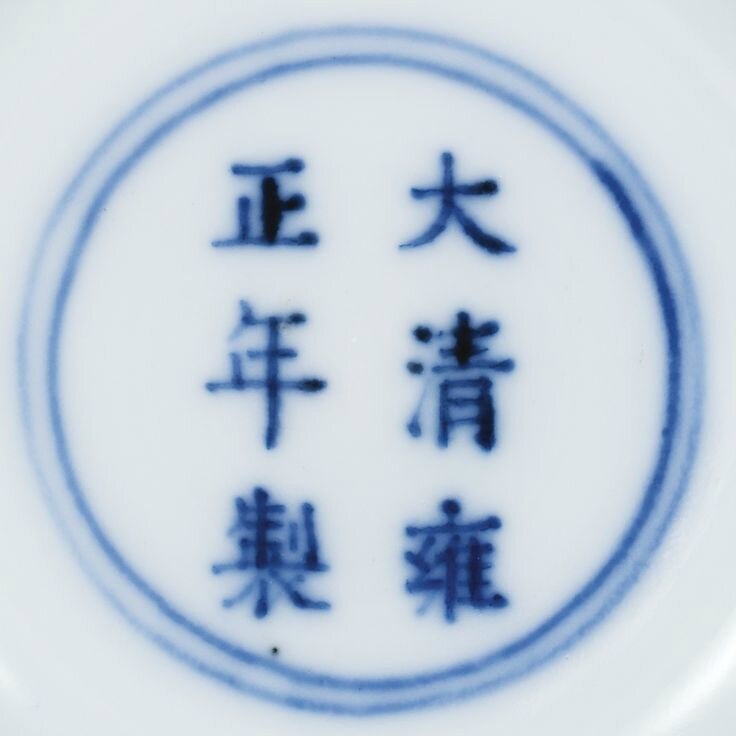A fine and rare pair of doucai candlesticks, marks and period of Yongzheng (1723-1735)
Lot 3708. A fine and rare pair of doucai candlesticks, marks and period of Yongzheng (1723-1735); 14.8 cm., 5 3/4 in. Estimate 1,000,000 — 1,500,000 HKD (114,956 — 172,434 EUR). Lot sold 1,250,000 HKD (143,695 EUR). Photo Sotheby's.
each with a slender cylindrical stem encircled by two bands of camellia blossoms with feathery leaves, supported on a stepped section with a square scroll all above a domed base with long slightly twisting lappets, the upper section with a wide pan with inturned rim, all decorated in soft pastel shades of enamels and underglaze-blue outlines, the base inscribed with a six-character reign mark within a double-circle.
Provenance: S. Marchant & Son, London.
Sotheby's London, 10th June 1997, lot 94.
Exhibition: Imperial Porcelain of Kangxi, Yongzheng and Qianlong, S. Marchant & Son, London, 1996, cat. no. 28.
Note: Finely painted in the soft-toned doucai enamels, this pair of candlesticks is extremely rare for its unusual form and decoration. Candlesticks of this type would have been produced as part of imperial altar garnitures and used during ritual ceremonies. The form of these candlesticks appears to derive from bronze bell-shaped candlesticks, which grew in popularity in the Ming dynasty (1368-1644) and by the Qing dynasty were produced in a variety of materials. Notably, the bands of decoration encircling them appear to combine a variety of influences which reveals the cosmopolitan nature of the empire of the time: the foliate scroll on the outer rim of the pan and the leaves emerging from the lotus flowers on the stem are similar to European acanthus leaves, the fiery-red petals on the base of the stem and the lappet base are reminiscent of Tibetan designs, while the lotus is traditional flower from Chinese imagery. Individual examples were sold at Bonhams London, 8th November 2004, lot 163; and at Bonhams San Francisco, 20th December 2011, lot 8334.
Sotheby's. Important Chinese Art, Hong Kong, 07 oct. 2015

/https%3A%2F%2Fprofilepics.canalblog.com%2Fprofilepics%2F1%2F0%2F100183.jpg)
/https%3A%2F%2Fstorage.canalblog.com%2F03%2F02%2F119589%2F96711876_o.jpg)
/https%3A%2F%2Fstorage.canalblog.com%2F11%2F31%2F119589%2F94773502_o.jpg)
/https%3A%2F%2Fstorage.canalblog.com%2F20%2F83%2F119589%2F94772815_o.jpg)
/https%3A%2F%2Fstorage.canalblog.com%2F26%2F72%2F119589%2F75604929_o.jpg)
/https%3A%2F%2Fstorage.canalblog.com%2F59%2F60%2F119589%2F26458628_o.jpg)





/image%2F1371349%2F20240326%2Fob_936d86_104-1.jpg)
/image%2F1371349%2F20240326%2Fob_823710_102-1.jpg)
/image%2F1371349%2F20240326%2Fob_55a293_101-1.jpg)
/http%3A%2F%2Fstorage.canalblog.com%2F33%2F99%2F119589%2F129627838_o.jpg)